The challenge is changing.
The world of work is amidst one of the biggest changes it’s ever seen. Accelerated by the pandemic, changes in working patterns, the VUCA (volatile, uncertain, complex and ambiguous) world we live in, and rapid enhancements in technology.
We’ve had to contend with the aftermath of the pandemic, the Great Resignation, a worsening labour shortage and a workforce on the edge of burnout.
The magnitude of the need to provide employees with support and safe passage through the turmoil around them is of epic proportions.
As L&D and HR we need to step up and find creative solutions to address these new age challenges. Solutions that balance not only the organisational needs, but also the changing needs of our employees. And with hybrid working fast becoming the expected norm, we need to make sure we can deliver training, on scale to remote workforces.
Workplace trends – why do we need to act?
One of the top recent challenges is the Great Resignation.
The Work Institute’s 2022 Retention Report found that career development is the top reason people leave, at 22.3% of the total reasons for leaving. After seeing a dip during the pandemic of 2020, career development rose again to be the most popular reason for leaving for the twelfth consecutive year. Within this, a ‘lack of growth and development opportunities’ has seen an increase of 170% between 2010 and 2019.

Organisations need to emphasise the importance of managing an employee’s career within the organisation. This could include different jobs within the company, growth in their current job, or developing new skills to attain a promotion. For all of these, offering an effective training and development strategy is crucial.
A further study by McKinsey into the Great Resignation for 2021-2022; The Great Renegotiation and new talent pools | McKinsey, again found that a lack of career development was the top reason for people leaving, with 41% of those who have left, or are planning to leave attributing their exit to a lack of development.
Simply put, organisations that don’t develop their people will lose them, and this is hugely costly. Research by the Work Institute indicates that losing an employee typically costs approximately 33% of their base pay.
The Great Reimagining.
But it’s not all bad news! With huge change, comes a huge opportunity to do things differently.
It has been suggested by Deloitte that after the Great Resignation we are now entering the era of the Great Reimagining of the Workplace. The L&D sector is uniquely placed to help all companies thrive and grow in what is set to be yet another challenging but exciting year ahead.
Critically a reimagination of the workplace takes into account the changing needs of how and when our employees want to learn. Three key challenges exist:
1. Helping people not to forget – making that learning stick and stand the test of time;
2. Making learning accessible for everyone regardless of their learning preferences; and
3. Keeping learners motivated and engaged.
These challenges might have been around for some time, but they are more prevalent now as our work lives are changing. For example, appealing to different learning preferences and making learning accessible is a more widespread necessity with the majority of organisations having a strategic emphasis on EDIA. And keeping learners engaged with learning has always been a consideration, but more so now, when we’re busier than ever.
Whilst the challenges might be familiar, the solutions aren’t – it’s a once in a lifetime opportunity to reimagine the workplace and bring it into the 21st century!
The challenge vs solutions:
1. Forgetting what we’ve learned.
We might remember long nights before an exam, sat up with a textbook and several cans of Red Bull, trying to ‘cram’ as much information as we possibly could, knowing that it wasn’t going to stick past tomorrow.
Think about this yourself – what was the last course you attended, or the last thing you learnt? Do you remember all of the pertinent information you needed to? Likely the answer is no, and that is not surprising from what we know about the human brain.
We can blame biology — conserving energy has been essential for humans’ survival, as it allowed us to be more efficient in searching for food and shelter, competing for sexual partners, and avoiding predators. As a result, our brains quickly forget what we don’t use regularly.
According to a Harvard Business Review report called ‘Where companies go wrong with L&D’, only 12% of employees apply new skills learned in L&D programmes to their jobs.
The reality is, asking our people to sit through long classroom or online courses is both a waste of time and money, unless there is effort made to embed that knowledge – making it second nature.
We need to think of it like exercising memory muscles until our brain deems it as important.
The solution: spaced repetition.
We can solve the forgetting challenge with spaced repetition. This isn’t a new way of learning. As a learning psychology it’s largely attributed to Hermann Ebbinghaus, a German psychologist who pioneered investigations into memory in 1885.
He conducted a series of memory experiments on himself, memorising lists of meaningless syllables and testing himself periodically to see how many he remembered. The result of these experiments was Ebbinghaus’s forgetting curve. He discovered that his memory decayed very quickly at first.
Modern studies suggest that we forget about 50% of new information within an hour of learning it. And that goes up to an average of 70% within 24 hours. Now, that presents a problem for L&D teams, but there is a solution!
Critically, he also found that the rate at which he forgot could be slowed down by repeating the learning at intervals.
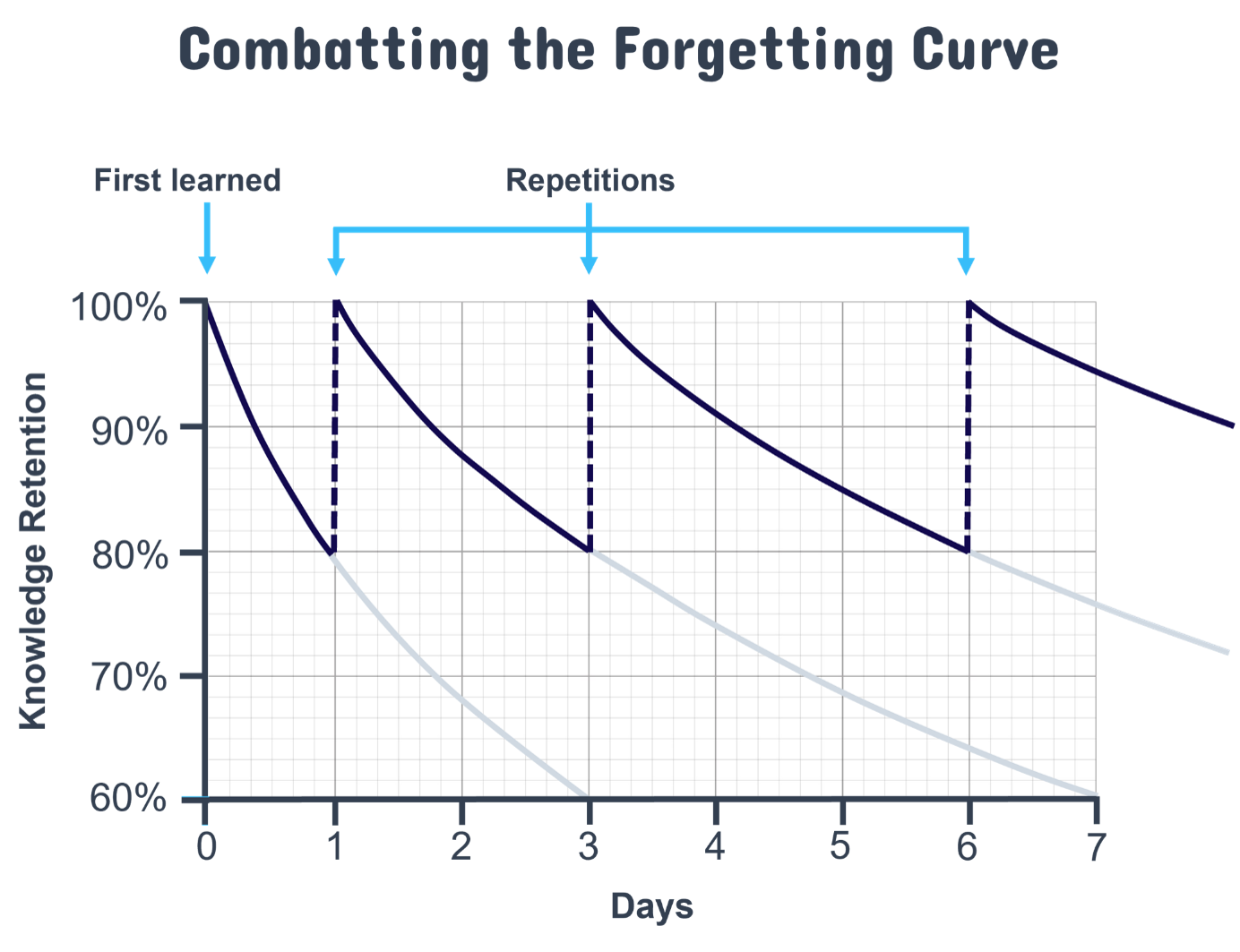
 This is the basis for spaced repetition – repeating information at set intervals over time allows us to overcome the forgetting curve and increases our knowledge retention.
This is the basis for spaced repetition – repeating information at set intervals over time allows us to overcome the forgetting curve and increases our knowledge retention.
But that’s not all. In order not to forget, the intervals at which we repeat a learning, must be timed precisely as we’re about to forget. If the repetition is timed correctly, the brain has to work to recall that memory, strengthening it like a muscle.
Have you ever tried to remember someone’s name who you’ve just met by repeating it to yourself ten times? Chances are this worked for a short time window, but if you then tried to recall their name the next day you would have realised, you’d forgotten. This is because when you performed the repetition, their name was already front of mind, so no work was done recalling it. In order for the repetition to be effective, it has to be very precisely spaced.
Spaced repetition exercises our memory muscles until our brain deems it as important. Just like riding a bike – as kids we practiced so much that even if we haven’t ridden a bike for years, we’ll still remember!
Spaced Repetition helps to embed knowledge and learning transfer.
Leitner’s flashcards
In the 1970s, a German science journalist Sebastian Leitner, took the implementation of spaced repetition a step further.
In this method, flashcards are sorted into groups according to how well the learner knows each one. The learners try to recall the answer to the question written on a flashcard. If they succeed, they send the card to the next group. If they fail, they send it back to the first group.
Each succeeding group has a longer period before the learner is required to revisit the cards. In Leitner’s original method, published in his book ‘So lernt man Lernen’ (How to learn to learn), the schedule of repetition was governed by the size of the partitions in the learning box. These were 1, 2, 5, 8, and 14cm.
Only when a partition became full was the learner to review some of the cards it contained, moving them forward or back depending on whether they remembered them. Subsequent other methods have evolved, such as the below to dictate how often each box is reviewed.

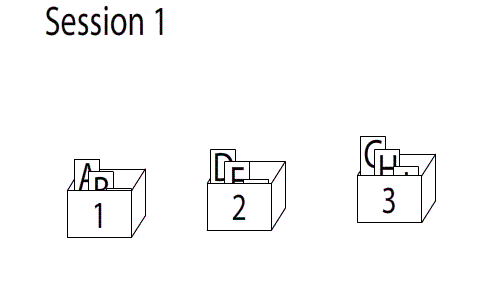
Leitners method in practice
Spaced repetition today.
Advancements in technology mean that spaced repetition can now be easily automated, and this has evolved other similar solutions such as nudge learning and targeted revision. You might have come across spaced repetition learning apps such as Duolingo or Anki. Algorithms and AI utilise Leitner’s theory to determine the exact frequency of repetition; the systems are essentially learning what the user doesn’t know, and then targeting those knowledge gaps. The learning is completely personalised to each individual as opposed to traditional learning where everyone has the same learning experience.
Spaced repetition has been used by language students and medical students for several decades, but it’s only making an entrance into the corporate world in recent years, with significant impact. An early version of our own SR software solution, backed with 3 years’ worth of research data, had a proven 33% increase in knowledge retention.
Not only does it offer huge learning efficiencies and a guaranteed improvement in performance, spaced repetition fits with the modern workplace and the need to learn on-the-go in bite-sized chunks, meaning less time out of work for employees.
And, in a hugely competitive world where customer experience can make or break a business, spaced repetition means greater knowledge retention and an improved ability for employees to deliver that unforgettable experience, whatever their role. So, if your employees learn not to forget; your customers won’t forget you.
2. Different learning preferences.
Let’s say we had to change the filter on our vacuum cleaner, how many of us would know how to do it? The chances are we wouldn’t, we’ve probably not done it for 18 months or more. So, where do we go to find out? We might read the product information booklet, watch a YouTube video, call a friend or family member for help, or we might opt to just give it a go!
No two people are alike. Everyone is unique and experiences the world differently, so it’s not surprising that we all learn in different ways too. Catering for each individual’s learning preferences may sound like a monumental task, but there are four primary learning styles that we should try to accommodate.
The four key learning styles to consider are: visual, auditory, reading and writing, and kinaesthetic (VARK).
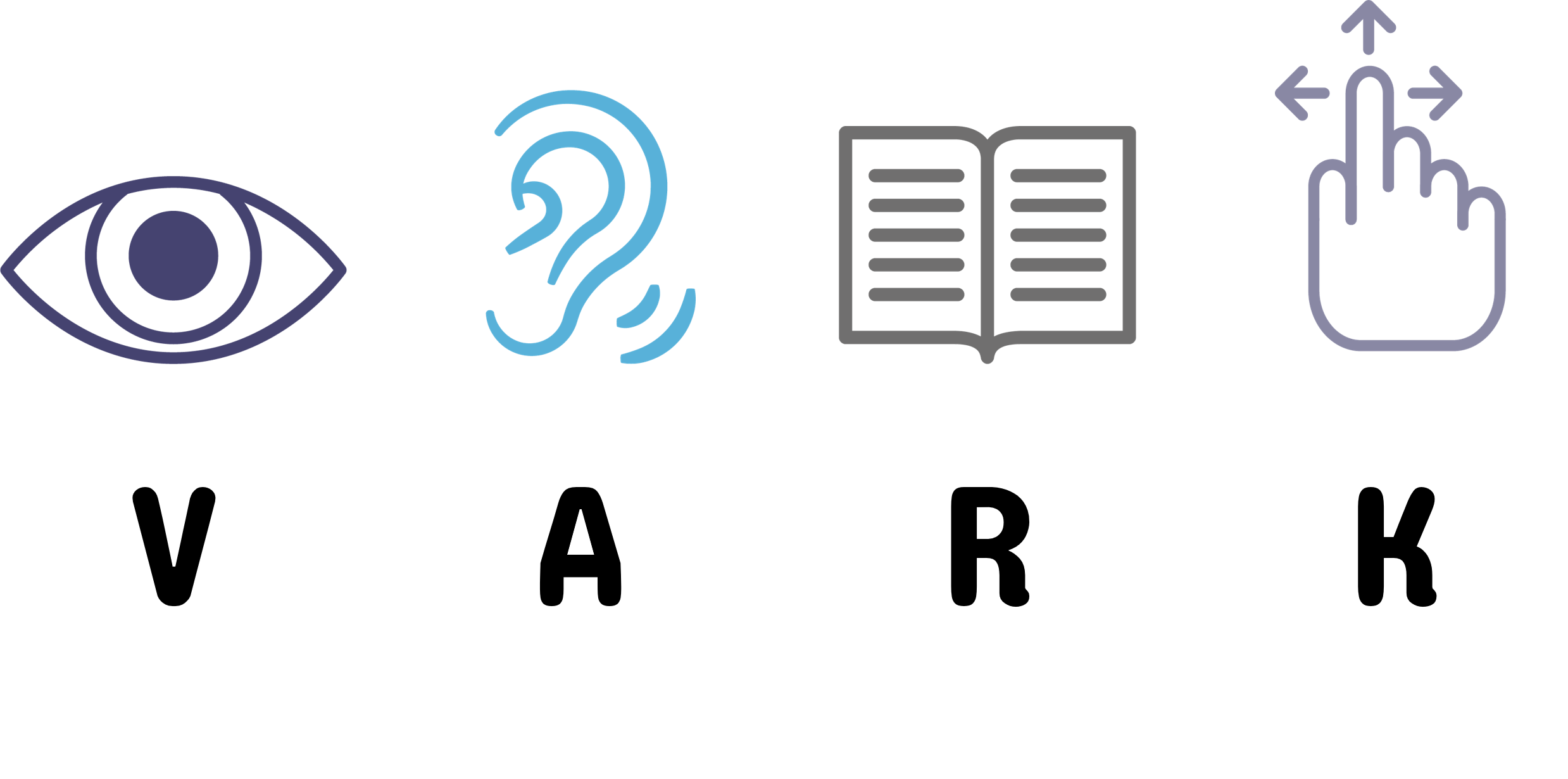
Visual – Visual learners understand and absorb new information more effectively when it’s presented to them graphically. This might include using images, animations, and videos. Or when presenting data, using charts and infographics to help them retain the information.
Auditory – Auditory learners tend to learn better when the subject matter is reinforced by sound. In other words, they learn by listening. Consider the use of voice-over videos, audio recordings and podcasts that they can rewind and listen to as needed.
Reading & Writing – These learners prefer to learn through written words. They like books and articles and write down what they’ve just learnt to help them remember it better. You’ll often catch them reading reports, video transcripts, case studies, or blogs, and taking detailed notes during company meetings. Considering short articles, blog post links and white paper summaries could work.
Kinaesthetic Learners – Kinaesthetic, or tactile learners, learn best by experiencing or doing things. They thrive when mimicking real-life situations, solving problems through a trial-error method, or touching and handling objects. Possibly the harder learning preference to cater for when creating digital assets but, consider giving them a physical task to complete, a sorting activity in the learning, for example, or let them see and digitally ‘handle’ a product.
The solution: Blended learning experiences.
The reality is we all have a mixture of different learning preferences, and we will all learn best through a blend of these different experiences. Research has proven that when we engage a number of our senses, we understand and remember more.
Multimodal learning combines visual, auditory, reading and writing and kinaesthetic (VARK) learning modes to appeal to diverse learning preferences and create an exciting and engaging learner experience. It presents a wide variety of media to maximise the learning potential and help people remember.
Multimodal learning also enhances the 70/20/10 blended learning adoption. We all intuitively know that blended learning is important, but if we’re honest with ourselves, how well are we really doing it?
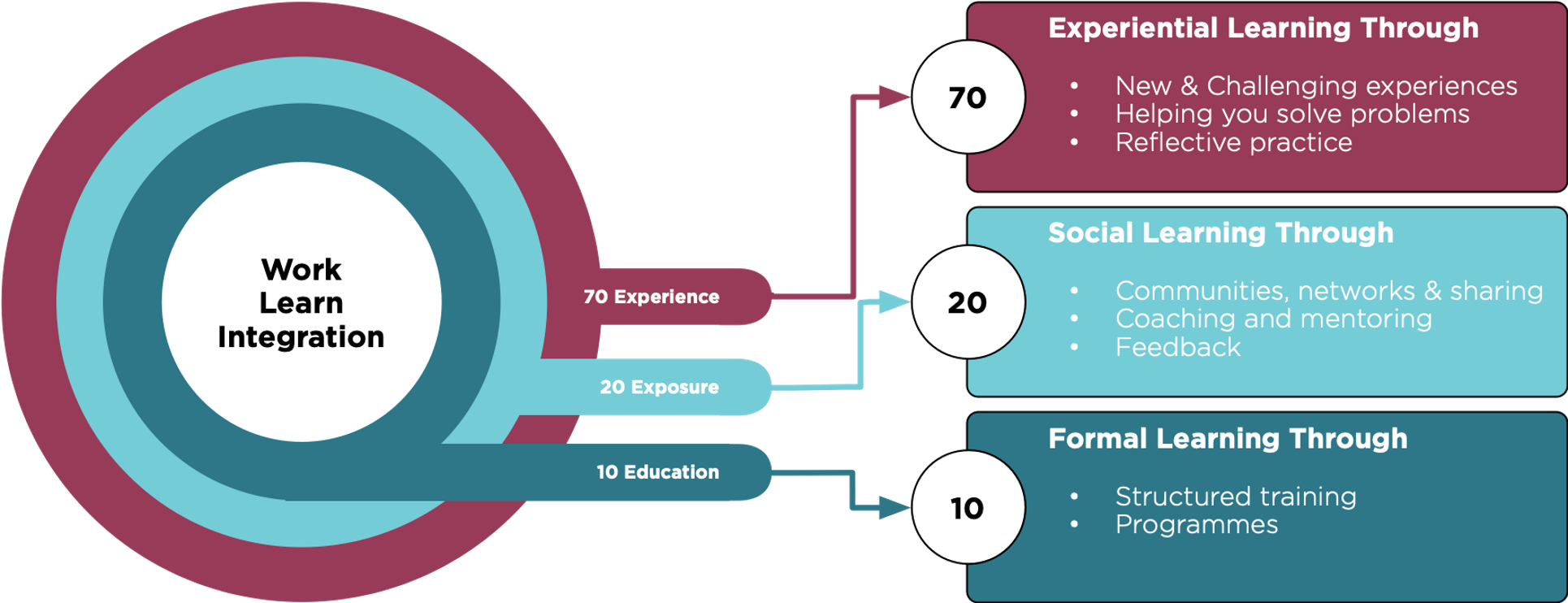
Blended learning – are we really getting it right?
The issue is that we tend to overlook it and “sign-off” training as complete after the 10% education phase. By leveraging multimodal learning, with its range of learning styles and interactions we are presenting the learner with, at least in part, their 70/20/10.
Multi-modal learning in practice.
There are many different options of ways to present bite-sized learning content to maximise learning potential. From simple explainer text or videos, to interactions such as flip cards, sorting activities and self-assessments, to more complicated experiences such as exploring 3D objects in a digital environment, exploring a digital room, and working through scenarios in a safe environment with dialogue trees.
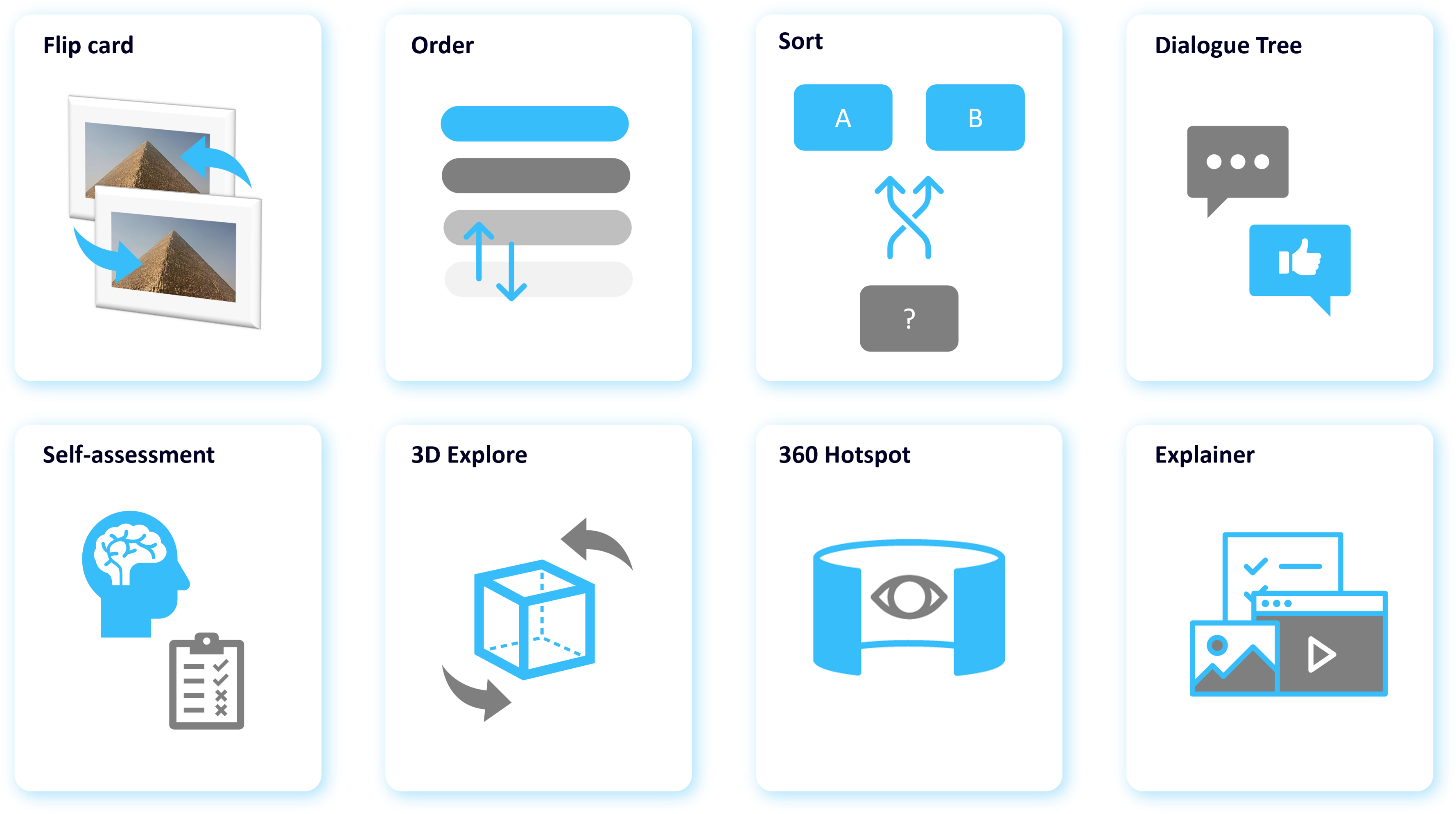
Multi-modal learning options.
3. Keeping learners motivated and engaged.
Onto our third and final challenge….How do we keep our learners motivated and engaged?
A recent LinkedIn Learning survey of over 4,000 professionals revealed that 94% of employees would stay at a company longer if it invested in their career, showing that people want to learn….yet the study also showed the number one reason employees feel held back from learning is because they don’t have the time.
Research by Deloitte shows today’s employees have just 1% of their typical working week to focus on training and development, which ends up totalling around 24 minutes a week, on average.
The modern learner has a lot of competing priorities! If we think about this is our own lives, we might think we don’t have the time to watch a two-hour movie. But we put on a series and end up watching four episodes! Our brains prefer bite-sized, it feels so much more manageable! Plus, there’s little rewards along the way, the climax at the end of each episode, which gives us the dopamine hit we need to continue.
We’re in control of it more too, we know how far through we are, we can choose to stop or carry on. With a series, we didn’t need to commit to investing two hours up front, which feels insurmountable. Learning is no different.
The importance of small steps.
In his book ‘Atomic Habits’, James Clear talks about large life goals such as losing 2 stone or maybe it’s giving up smoking. You may well have set yourself a goal like this. The problem here is it feels insurmountable, 2 stone is a long-term target, and nothing I do today will make that happen. Often, we give up because it feels impossible.
Or imagine we’ve got a big task to complete at work, it feels overwhelming, we know we’ve got to do it, but we’re not sure how to start, so we put it off, we procrastinate over it, and push it to one side for as long as possible. We find it hard to eat that frog!
But if we set ourselves a small challenge daily, let’s say a step target for our weight loss, it’s both a small achievable step, and we are instantly gratified for our accomplishments, for example closing our rings, or earning a medal on our smart watches.
This might sound silly, but how many of us have written to-do lists at the end of the day just to cross things off and feel accomplished? That’s because we love instant gratification!
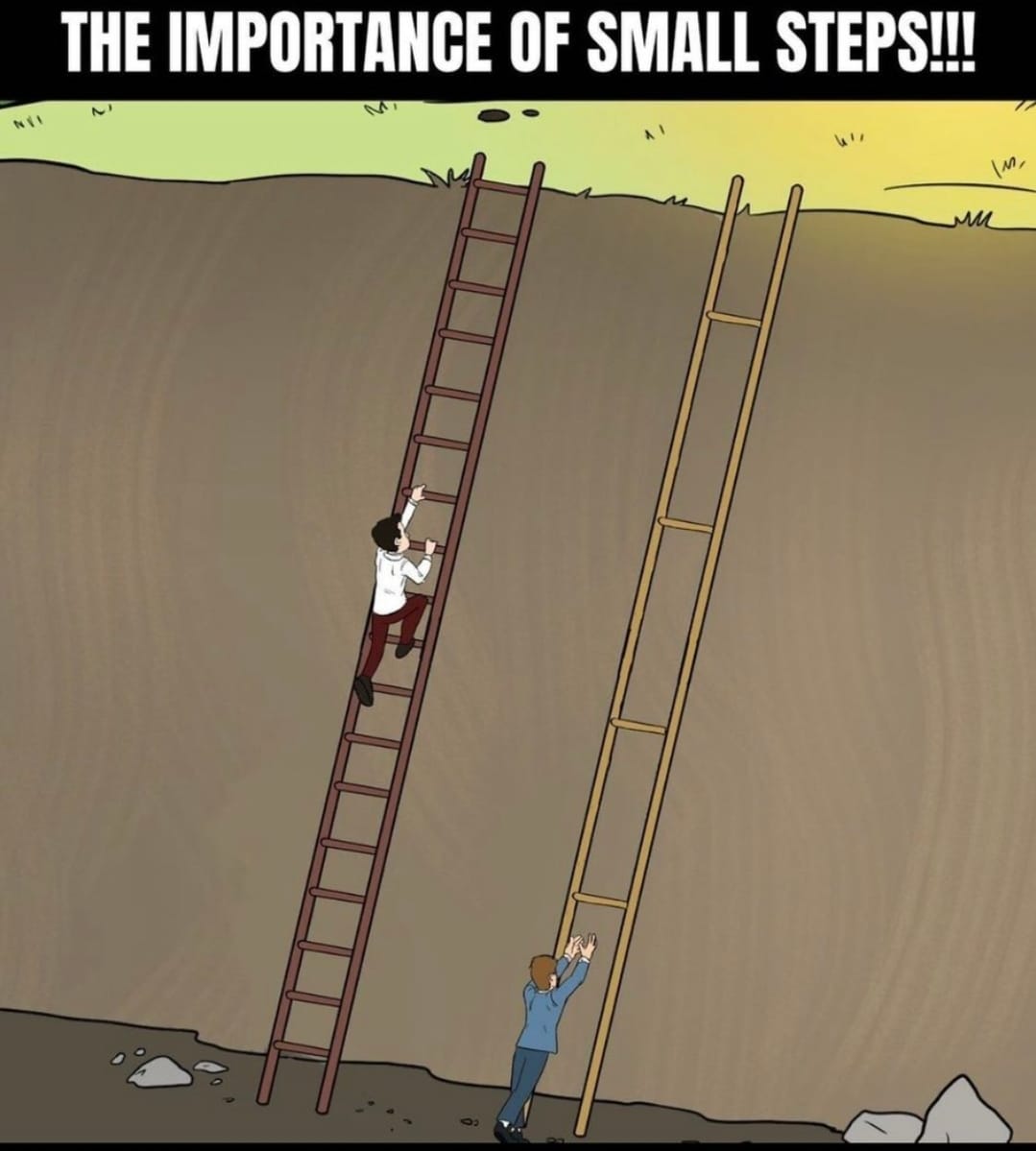
We can’t climb mountains in one go! We need digestible chunks, with little wins on the way.
So large goals and large tasks feel impossible. Small digestible steps not only feel better, they play to our reward mechanisms as well.
Reward psychology tells us that continuous reinforcement is the most effective schedule when we are trying to establish a new behaviour. Providing a reward every time, helps to reinforce the behaviour, hype up motivation and increase attention spans among learners.
Avoiding cognitive overload.
Small steps are also important because we don’t have the brain capacity for lots of content at once. In fact the research conducted by George Miller as far back as 1956, is one of the best-known articles in psychology. He states we can only remember 7 (+/-2) new pieces of information at once in our short-term or working memory. Any more than this and we are simply overloading our cognitive capacity!
This also links back to our spaced repetition principles, talked about earlier, that unless we do something to make our brains deem it as important, i.e. to upgrade it from our short term memory, then we will quickly forget it.
Learning trends shifted to short Virtual Classrooms through covid, and this has stuck for good reason.
Engaging different generational learning preferences.
Today’s workplace has the biggest mix of generational demographics we have ever seen. Generational age brackets and their differences are driven by social, political, economic and technological trends of the time. The world we live in now is changing faster than ever, so generational age brackets are becoming shorter. Coupled with, of course retirement being much further off as we are living longer, and we have a much greater span of generations in the workforce.
Now, more than ever, organisations need to appeal to a wide range of generational learning preferences. Gen Zers, the latest generation to enter the workforce, are digital natives, typically have shorter attention spans (the average being just 8 seconds compared to Millennials who average 12 seconds) and are they are practical, valuing self-reliance and independence.
The solution: bite-sized learning.
If we are to tackle the issue raised in research by Deloitte, that showed today’s employees have just 1% of their typical working week to focus on training and development, we need to give our learners small digestible chunks of bite-sized content. 1% of the week totals around 24 minutes a week, on average, which equates to just 5 minutes a day.
For our people to be able to fit training into their busy work schedules, we need to make it a maximum of 5 minutes a day, otherwise we lose their engagement before they’ve even started.
Bite-sized digital learning also puts our learners in charge. Just like Netflix they’re in control of it, they know how far through they are, and they can choose to pause and come back to it later, or carry on. They can fit it into their lives as they see fit.
This approach also ticks the boxes, as described by James Clear, of short-term, small goals as opposed to feeling like the end goal of learning a particular topic is unachievable and insurmountable. It prevents the procrastination of not even starting an overwhelmingly long learning course.
And finally, bite-sized learning avoids cognitive overload; that 5 minutes a day takes into account Miller’s research that shows our brains can only remember 7 (+/-2) new pieces of information at once in our short-term or working memory. It’s far more productive to spend 5 minutes learning a few key things than it is to waste half an hour learning many things that our brains can’t commit to memory. Spaced repetition can then help shift these few critical learnings to our longer term memory by embedding them and making our brains realise they are important.
Possibly one of the biggest considerations for keeping our employees engaged and motivated today is recognising the preferences of the newer workforce generations, in particular Gen Z. If we continue to deliver training in more traditional ways and overlook this critical change, we will be very effective at disengaging a good proportion of our workforce. For Gen Zers as learners, they expect personalised, online, on-demand experiences and they want self-directed learning. They absolutely expect technology to make their lives easier.
Again, bite-sized learning and spaced repetition that personalises the learning plays to the Gen Z preferences. Mobile learning that they can access on-the-go, on-demand is also crucial.
Wrap all of this up with some gamification features and we can leverage that reward psychology to hook our learners in, hype up motivation and keep them hooked!
Summary
Three key learning challenges exist as we contemplate the Great Reimagining of the workplace:
Helping people not to forget – making that learning stick and stand the test of time; making learning accessible for everyone regardless of their learning preferences; and keeping learners motivated and engaged, taking into account a mix of generational requirements.
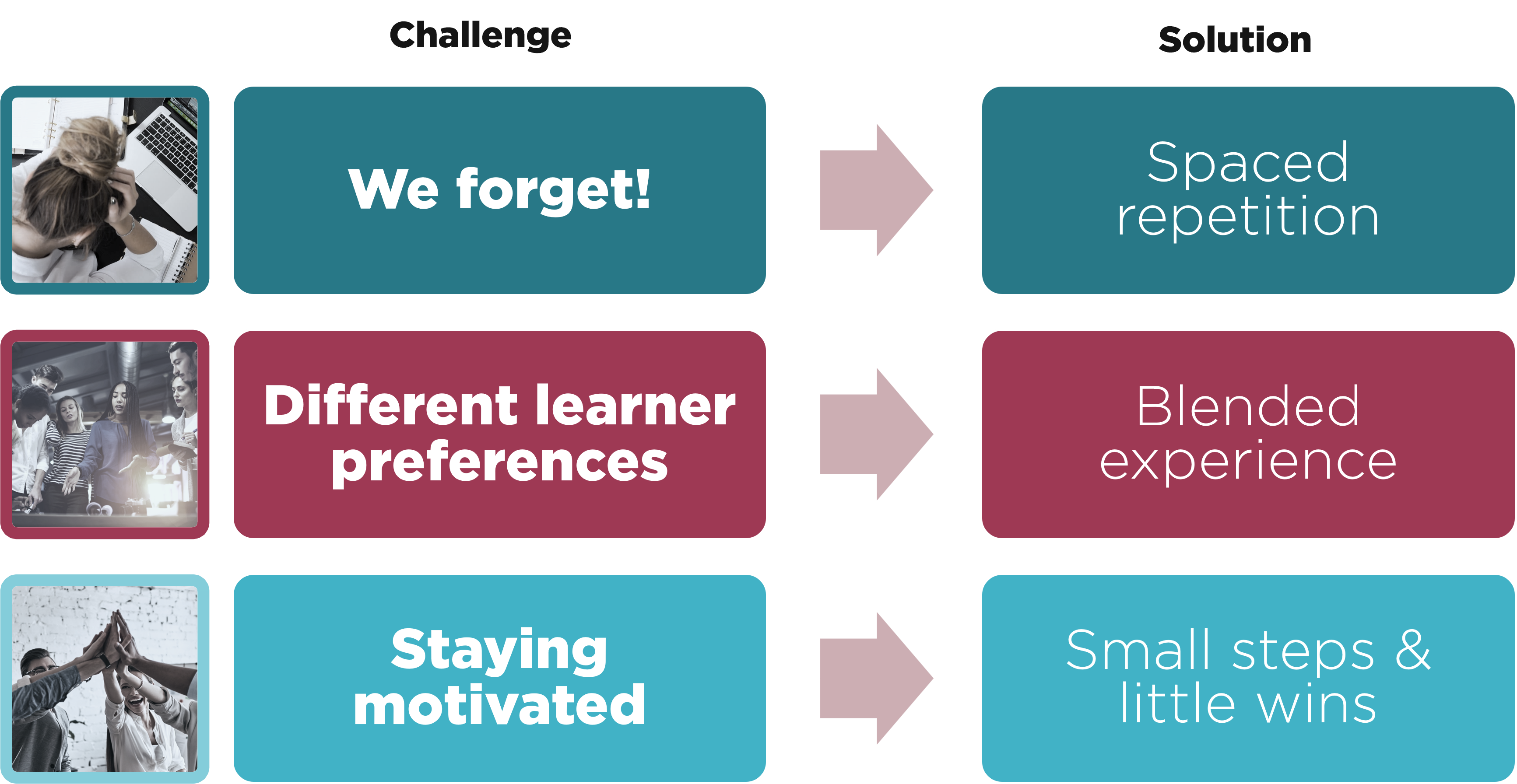
The Great Reimagination of the workplace, needs great reimagined solutions.
Many solutions exist already, and many organisations have adopted these. However, with big change, such as we’re facing in the workforce in the coming years, also comes a need to reimagine the solutions! What we knew worked before, will very likely not work at all, or at least not work as effectively as we evolve through the next few years. The more innovative, fresh, forward-thinking solutions are the ones to keep an eye on.
We need a mixture of spaced repetition learning, truly blended multi-modal experiences taking into account the diversity of learning preferences to align with our inclusion strategies, and finally bite-sized, mobile learning, with gamification to leverage reward psychology and keep learners hooked, whilst specifically targeting the personalised, on-demand, self-directed learning that appeals to the newer workforce generations.
The changing world of work is something that excites us at PeopleUnboxed! We place a lot of energy and effort into understanding workplace trends and helping organisations stay ahead of them. So, it won’t surprise you that we have been keeping very close to the emerging trends discussed in this article, coupled with over four years of our own research, to bring you the very latest and unique learning technology solution.
Want to know more about how we can help you with this?
Power up your performance: find out how with BentoBot or try our free BentoBot demo (it only takes 10 seconds to get started!).
